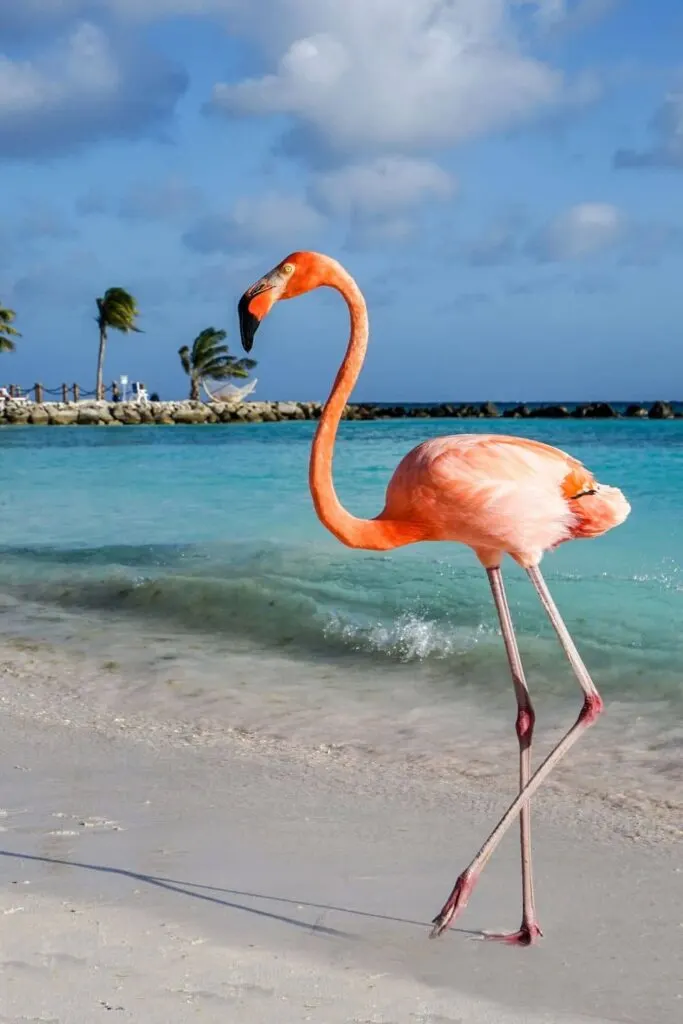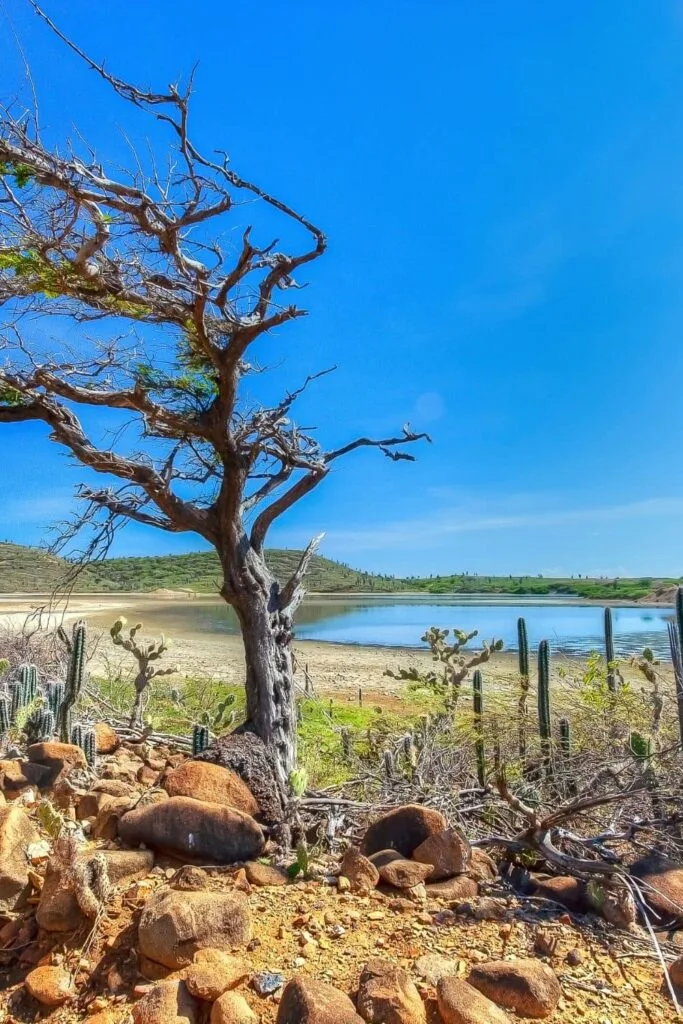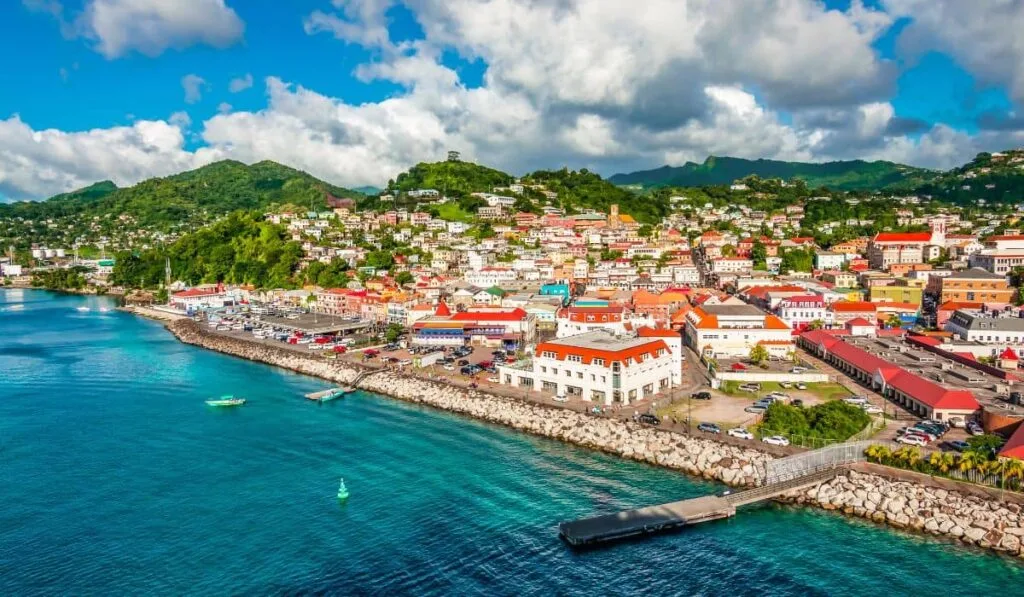
Visiting the Caribbean Islands in September can be an extremely pleasant experience, with warm weather and clear blue skies. However, this is peak hurricane season for the region, so purchasing travel insurance is essential.
Regardless, with low humidity, plenty of sunshine, and beautiful beaches to explore, the Caribbean could make an excellent destination for those looking for a warm getaway at the end of summer.
In September, cruise passengers can score great deals on itineraries in the hurricane belt. However, they must be flexible on port changes or island cancellations should a tropical storm arise.
While it’s hard to predict a storm, your captain will study weather patterns and change course if required. Their ultimate goal is to keep guests safe.
If it’s your first time, trying to choose between the eastern and western Caribbean can be a tough choice. So, if you’re not pressed for time, a back-to-back 14-day itinerary can give you the best of both worlds.
🛳️ Looking for the best Caribbean cruise?
Find your perfect cruise for any budget with Cruise Direct. Choose from 3 night mini cruises to extended voyages of 15+ days with great pricing.
Find your cruise hereWhy September Is A Great Month For Visitation
Most travelers vacation in the summer or winter months. The summer months are an obvious choice because kids are out of school.
When the children return to school in September, cruise lines often struggle to fill their vessels. In some parts of the world, ships reposition as they chase the sun.
As peak season comes to a close, the hurricane season brings lower prices and ships sailing with a lower guest count. So, if you’re primary goal is to save money, September is the best time to head out into the Caribbean’s turquoise waters.
The best Caribbean destinations to visit differ from person to person. History buffs may sway towards one destination over those who want a beach day. You’ll enjoy warm temperatures and a tropical climate, whatever itinerary you choose.
Caribbean Weather In September
There are pros and cons to traveling in the low season. While you’ll benefit from rock-bottom pricing, you could experience unfavorable weather with some rainy days.
Even if you avoid tropical storms, you’re cruising in the wet season, so expect a rainfall or two. Rain tends to be short-lived, and things dry out fast with hot weather. However, you’ll want to pack for changeable Caribbean weather in the fall.
Most islands will experience average highs in the 80s or low 90s, and the ones further south will be much drier.
Aruba
The ABC Islands (Aruba, Bonaire, and Curacao) are popular year-round. However, due to their location much further south, they tend to avoid tropical storms which hit further north. You could say they’re almost hurricane-proof!

Of the ABC Islands, Aruba may be the most well-known, maybe because of the Beach Boys’ song “Aruba, Jamaica, ooh I wanna take ya!” It’s definitely the most touristy and one of the most popular islands in the Southern Caribbean.
Located 15 miles off the coast of Venezuela, cruise ships dock in Oranjestad, the capital. Aruba stands out from its neighbors for its sunny climate with little rainfall. The small island is mostly desert with rocky terrain full of cactus and aloe plants.
Arikok National Park covers almost one-fifth of the island and contains caves and other archeological remains of Aruban history.
Trade winds constantly blow across the island, making the high 80s temperature bearable and bending iconic Divi Divi and Fofoti trees into bonsai-like shapes. If you don’t want your hair to resemble a bonsai tree, you might want to tie it up.
For the best Aruba beaches near the ports, visit Palm Beach or Eagle Beach. Noted for its white sand and windswept palm trees, Eagle Beach is a must-visit for tourists looking to experience all that Aruba offers.

For adventure seekers, off-roading, kite surfing, and scuba diving to one of many shipwrecks might be more to your liking. If you prefer to keep your feet dry, a catamaran excursion or submarine tour allows you to enjoy the ocean from the safety of a vessel.
If you want to take advantage of duty-free shopping, you can hit the shops for Cuban cigars, jewelry, leather goods, perfume, and Dutch cheese. Although businesses readily accept the US dollar, the Aruba Florin is the official currency.
Bonaire
The neighboring island of Bonaire sits 50 miles north of Venezuela. Unlike Aruba, this small island lacks sandy beaches. Bonaire consists of volcanic rock and coral reefs. With movement in the Caribbean tectonic plate, underwater corals rose above the water.
While new reefs have formed, Bonaire now offers one of the world’s top diving sites from land. With over 80 diving areas protected by the Bonaire National Marine Park, its rich corals team with marine life.

The coral landscape above the water begs for exploration if you’re not into diving. The Washington Slagbaai National Park engulfs 20% of the island’s landscape and contains mangroves, deserts, salt ponds, and oodles of cacti.
For avid hikers, you can choose three different treks, from the easy Lagadishi Walking Trail to the more challenging Kasikunda Climbing Trail. Whether you drive or walk the park, you’ll have lots of opportunities to see hundreds of bird species, including famed pink flamingoes!
Expect average temperatures in the mid-80s, although the constant trade winds will keep you cool. Unlike other Caribbean islands, which receive significant rainfall in the fall, Bonaire is much drier. It also sees fewer crowds

If you like to shop, Bonaire’s official currency is the US dollar. In Kralendijk, the capital, you can admire the colorful buildings housing art galleries, restaurants, cafes, and boutiques.
Curacao
As the largest isle of the ABC islands, Curacao sits outside the hurricane belt. While the last hurricane hit in 1877, you’ll never be guaranteed perfect weather
Curacao and Aruba are owned by the Dutch and have many similarities. They both offer white-sand beaches and fantastic dive sites. However, if you’re seeking a cultural experience, the charming city of Willemstad will delight you.
Curacao has two cruise ports, which put you within easy walking distance of the old colonial buildings. From there, explore Rif Fort, a historic fort built in 1828, once used to protect the area from invasion and is now a lovely shopping district.

From there, you’re a stone’s throw away from the colorful shops along Queen Emma Bridge, reminiscent of the waterfront in Denmark.
Although it isn’t as polished and “Americanised” as more touristy places like Aruba, the capital city is a great place to explore its history and shop to your heart’s content!
For adventurous travelers, head inland to see Curacao’s desert-like landscape or hike up Mt. Christoffel. You’ll enjoy stunning views from the highest point on the island at 1292 feet.
If you’re looking to escape the beaten path, check out Hato Caves, the largest cave formation on the island. With a 45-minute tour, you can explore its caverns and admire the rock formations while learning about how it was once used as a shelter by the Arawaks.
Snorkeling with sea turtles is equally popular and a great way to spend your port day in Curacao.

Whether you’re a history buff or just looking for something unique to do, make sure to add Curacao to your Caribbean vacation! Of course, don’t forget to hit up some of the idyllic beaches that this Caribbean gem has to offer!
Barbados
September is an excellent time to visit Barbados since port excursion prices are typically at their lowest. Being just north of the equator, expect warm and sunny weather sunny, with temperatures around 88 F during the day and around 77 F at night.
While September falls in the rainy season, the brief showers rarely impede exploration of the island. Although it still falls within the same Hurricane Season as other Caribbean islands, Barbados is unlikely to be directly hit by storms as they mostly veer north.
Although many travelers hit the warm waters to explore shipwrecks, there’s more to explore away from the beaches. So, check out the colonial towns and grand plantation houses as well as natural wonders like Harrison’s Cave which even homes exotic wildlife such as green monkeys!

For the foodies, you can try a selection of Bajan favorites such as flying fish, Cou-Cou, or guava cheese. With a rum-based cocktail and calypso music, what’s not to love about Barbados?
Unfortunately, you won’t be able to reach Barbados on a 7-day roundtrip cruise from Florida. Instead, you’ll need to take a longer Southern Caribbean cruise or depart from Puerto Rico or Bridgetown Port in Barbados.
Trinidad
Like the ABC Islands, Trinidad and Tobago are just outside the hurricane zone. In the fall, you’ll enjoy average daytime temperatures of 83 F and breezy trade winds.
Of the two islands, the Port of Spain cruise terminal on Trinidad (the larger isle) sees the most cruise ships. Those wanting an itinerary to Trinidad will find it on cruises out of Guadeloupe, Puerto Rico, Barbados, and Martinique.
The Port of Spain is a commercial dock, but you won’t have to stroll far to find duty-free shopping, souvenir shops, and locals peddling their wares.
These islands might be best known for their calypso music. However, beyond the steelpan, there’s a melting pot of cultures with influences from Africa, Europe, East India, and the Americas.

Maracas Bay provides the best option for beachgoers, although it will take a 45-minute cab ride to get there.
Nature lovers can choose between the Royal Botanical Gardens, Asa Wright Nature Center, or the Caroni Bird Sanctuary. The latter provides an opportunity to see the island’s national bird, the Scarlet Ibis.
Some can’t-miss places include Fort George and Mt. St. Benedict’s Monastery. While the narrow road up to Fort George might be hair-raising, at the top, you’ll enjoy impressive views of Port of Spain, see old cannons, and a tiny prison.
Also sitting high above the ocean at 800 feet, Mount St. Benedict’s Monastery is one of the oldest of its kind in the Caribbean. The mountaintop monastery is austere, still in use, and evokes a sense of calmness.
Whether you go for afternoon tea or to feel spiritually fulfilled, you’ll savor one of the island’s best views.
Tobago
Cruises to Tobago generally dock in the port of Scarborough, near the southeast tip of the island. Tobago is much smaller and less developed than her neighboring sister, perfect for those who prefer an authentic ambiance.
Pigeon Point is one of the island’s star attractions, with gorgeous white sand and crystal-clear water, perfect for water sports. From Pigeon Point Heritage Park, you can take a boat to snorkel at Bucco Reef or bathe in the shallow waters of Nylon Pool.

Englishman’s Bay, another can’t-miss beach, provides a romantic escape from Scarborough. This undeveloped beach has no lifeguards or locals selling items like at the crowded beaches.
One of Tobago’s major tourist attractions is the Argyle Falls, with a 54-meter drop that ends in an idyllic pool. A 1.2-mile trail leads up to the falls and their deep, clear pools of water, inviting visitors to take a dip!
Another highlight in terms of history and sight-seeing is Fort King George which dates back to the 1780s. The fort, which contains original walls, prison rooms, mess halls, cannons, and a lighthouse, overlooks Scarborough Bay.

Also found at Fort King George, the Tobago Museum displays many collections such as African Art, Amerindian artifacts, coins, and shells to provide further context to its history. No matter your interest, you will surely find something interesting while vacationing in Tobago!
Grenada
Located north of Trinidad and Tobago, the tiny Caribbean Island of Grenada sits inside the tip of the hurricane belt. However, due to its location in the southern Caribbean, it sees fewer tropical storms than islands in the northern region.
Grenada can accommodate two large or three small vessels a day at the St. George’s cruise port. The Eastern Caribbean dollar is the official currency, although many vendors accept the US dollar.

The city is very walkable, and with its backdrop of lush mountains and colonial architecture, considered one of the prettiest in the Caribbean.
You can learn about the island’s history at the Grenada National Museum. Then you can extend that history lesson with a visit to Fort George or Fort Frederick, two classic fortifications with the latter offering magnificent ocean views.
Like most Caribbean islands, Grenada has its share of beautiful beaches, with Grand Anse Beach being the most popular. On the western side of Grenada, you can enjoy snorkeling and diving to a shipwreck in crystal-clear waters.

Spice trees, growing throughout the island, provide a unique aroma of nutmeg, cloves, ginger, and cinnamon throughout your travels. You can take guided tours of spice plantations, showing you how spices are processed, graded, and sorted.
If rum is more to your taste (no pun intended), consider touring a local rum distillery, such as River Antoine Royal Rum Distillery. It is the oldest operating water-propelled distillery in both Grenada and the surrounding Caribbean.
Grand Etang Forest Reserve offers hiking trails through extinct volcano sites for more adventurous travelers.
Saint Lucia
Like the neighboring islands, September brings rain to St Lucia. However, the bulk of it falls in the rainforests, and you’ll be docking on the coast, where it’s much drier.
Located in the eastern Caribbean Sea, expect highs of 88 F and rarely fall below 84 F. The stunning island of Saint Lucia is known for its rainforests, beaches, and Pitons. You’ll only need an hour to explore Castries city, so have a backup plan to do something else.

It’s hard to miss the Pitons, which dominate the skyline with its pyramid peaks. It takes a lot of stamina and about six hours to visit those famed peaks on a tour. However, if you’re an avid hiker, it offers one of the best places to enjoy a mountain trek.
You can enjoy the Pitons on a catamaran, kayak, or snorkeling tour for a less strenuous activity.
Alternatively, Sulphur Springs markets itself as the world’s only “drive-in volcano.” Located in a dormant, collapsed volcano crater, the Soufriere Volcano or Sulphur Springs allows you to dive into a mud pool.
Some believe mud pools purify the body and help soothe sore joints. After an exhilarating mud bath, rinse off under a refreshing waterfall.

If you’re into chasing waterfalls, St. Lucia has an iconic one featured in the movie, “Romancing the Stone.” Diamond Falls may not be the highest cascade, but the high level of mineral content changes the rocks surrounding the waterfall.
Embarkation Ports
To reach the islands in the Southern Caribbean, you’ll need to board a ship from one of the southern islands or take an extended cruise from Florida. If you can’t manage the much longer itinerary, Puerto Rico, Barbados, Guadeloupe, and Martinique provide starting points.
Even though you may be trying to avoid the hurricane belt, your cruise ship will need to sail through that region to access the southern Caribbean islands.
Puerto Rico
Puerto Rico serves as an embarkation port for some cruise ships, such as the Celebrity Millennium and Norwegian Epic.
The shoulder season brings fewer tourists in September, so you could benefit from lower prices. Expect average temperatures of 88° Fahrenheit during the day.

If you’re embarking in San Juan, consider adding a few extra days to explore its rich history. Old San Juan has not one but two magnificent forts. The Spanish colonies built the Castillo San Cristobal, now a UNESCO world heritage site.
Overlooking the ocean, the Castillo San Felipe del Morro impresses with its six stories of hallways, tunnels, and walled rooms. Between the forts, the Museo de San Juan provides an outline of local history and culture.
If you prefer to escape the city to enjoy an area of natural beauty, head to Isla de Vieques. Seven miles east of Puerto Rico, the pristine island impresses with a Bioluminescent Bay, and wildlife refuge, home to wild horses.
Since September brings bad weather, you should avoid tours to Rio Camuy Cave Park or the El Yunque rainforest, as the trails will be muddy and unpassable.
Martinique
If you’re embarking in Martinique, the Tourelles Terminal or Port Simone Terminal serves as your cruise terminal. It takes a 30-minute taxi ride from the Aime Cesaire International Airport to reach the cruise port.
French is Martinique’s official language, and they use the Euro as currency.
East of the city, the Fort Saint Louis, built in 1638, acts as a historic site. While you can tour the seaside fortification, the majority of the fort remains closed because it’s an active naval base.
Predominantly Catholic, Martinique has lots of churches and cathedrals. You can find none finer than the stunning Balata Church, a miniature version of the Basilica of the Sacred Heart in Paris.

One of Martinique’s striking landmarks is the Bibliothèque Schoelcher. On the outside, it has an eye-catching Byzantine dome. Originally built in Paris, the library was dismantled, brought to the Caribbean, and reassembled.
Guadeloupe
The MSC Seaside offers southern Caribbean cruises from Pointe-a-Pitre, Guadeloupe. The island has an interesting history stemming from the French, British, and Swedish.
Should you arrive a day or two before your cruise, you can explore a rum distillery or sugar plantation or spend a day at the beach, snorkeling a nearby reef.
Guadeloupe boasts two unique museums exploring different aspects of the island’s history and culture. The Memorial ACTe museum near the cruise port provides an informative look at the Caribbean’s slave trade, indigenous people, and more.
Meanwhile, The Saint John Perse Museum in Pointe-a-Pitre features a permanent exhibit on Creole costumes and the achievements of Nobel Prize-winning poet and diplomat Saint John Perse.


